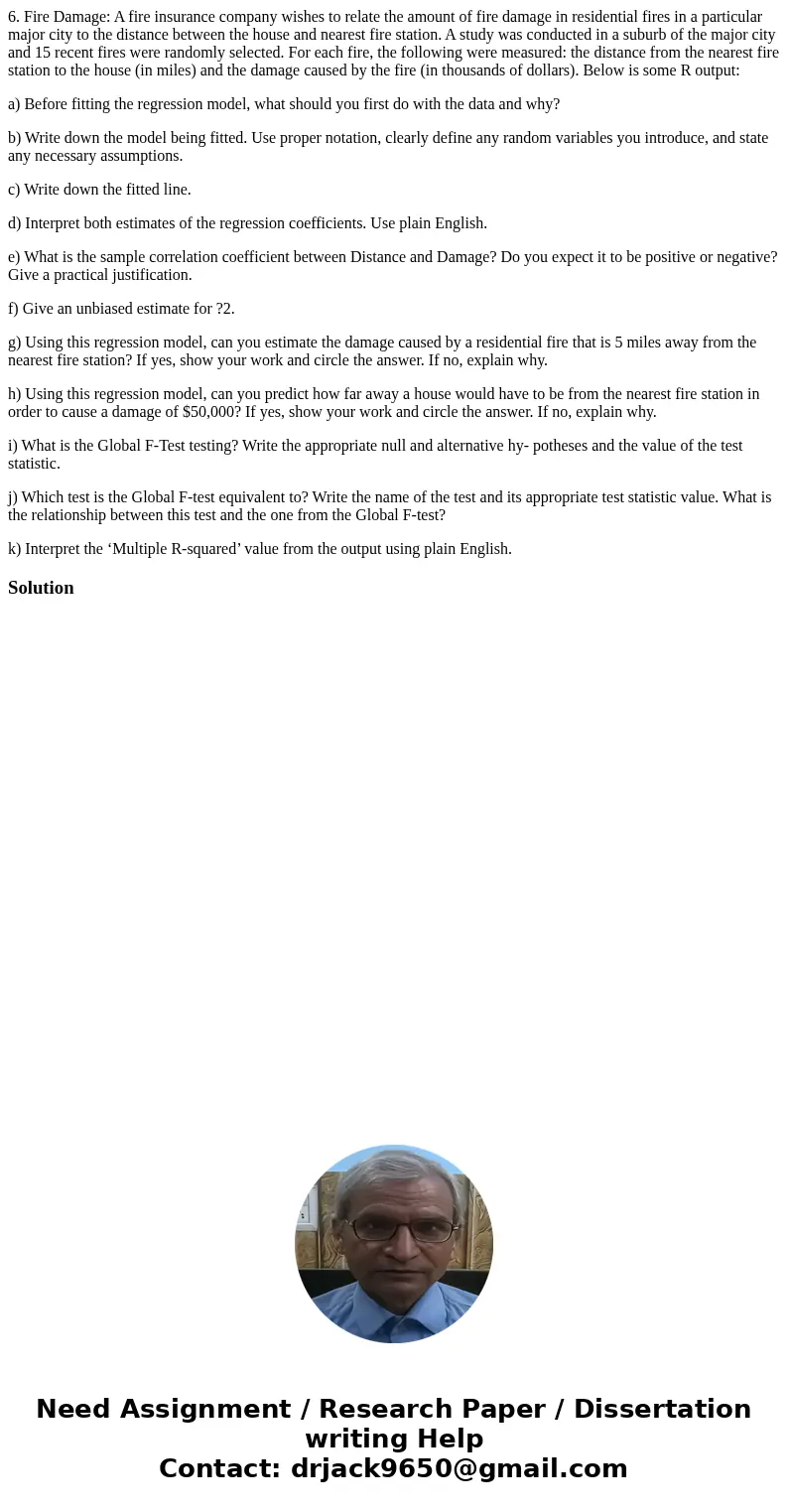6 Fire Damage A fire insurance company wishes to relate the
6. Fire Damage: A fire insurance company wishes to relate the amount of fire damage in residential fires in a particular major city to the distance between the house and nearest fire station. A study was conducted in a suburb of the major city and 15 recent fires were randomly selected. For each fire, the following were measured: the distance from the nearest fire station to the house (in miles) and the damage caused by the fire (in thousands of dollars). Below is some R output:
a) Before fitting the regression model, what should you first do with the data and why?
b) Write down the model being fitted. Use proper notation, clearly define any random variables you introduce, and state any necessary assumptions.
c) Write down the fitted line.
d) Interpret both estimates of the regression coefficients. Use plain English.
e) What is the sample correlation coefficient between Distance and Damage? Do you expect it to be positive or negative? Give a practical justification.
f) Give an unbiased estimate for ?2.
g) Using this regression model, can you estimate the damage caused by a residential fire that is 5 miles away from the nearest fire station? If yes, show your work and circle the answer. If no, explain why.
h) Using this regression model, can you predict how far away a house would have to be from the nearest fire station in order to cause a damage of $50,000? If yes, show your work and circle the answer. If no, explain why.
i) What is the Global F-Test testing? Write the appropriate null and alternative hy- potheses and the value of the test statistic.
j) Which test is the Global F-test equivalent to? Write the name of the test and its appropriate test statistic value. What is the relationship between this test and the one from the Global F-test?
k) Interpret the ‘Multiple R-squared’ value from the output using plain English.
Solution

 Homework Sourse
Homework Sourse